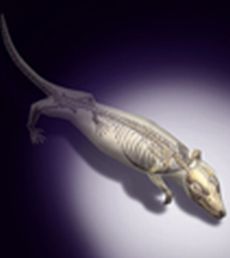 The 125 million year-old fossil remains in the Yan Mountains in what is now the Hebei Province in China have revealed a squirrel-like mammal – a new svelte. This svelte used to snag insects and worms scurrying around in the wee hours of the night.
The 125 million year-old fossil remains in the Yan Mountains in what is now the Hebei Province in China have revealed a squirrel-like mammal – a new svelte. This svelte used to snag insects and worms scurrying around in the wee hours of the night.
The animal was a five-inch-long furry critter and weighed less than an ounce. It had short limbs and claws, just ideal for digging and traipsing along the ground. The animal long body was supported by 26 thoracic and lumbar vertebrae.
It seems to be very much unlike most living and extinct terrestrial mammals, which tend to be much stouter, with humans having a much larger body, but with just 33 vertebrae in their spines.
Has the high number of these vertebrae undergo genetic mutations that occurred during the deep Mesozoic time?
The nocturnal mammal’s fossil sheds light on the evolution of the modern ear structure! In its relatively pristine condition, the animal’s middle-ear structure was still attached to the lower jaw bone by Meckel’s cartilage.
Thus, the new fossil does not just add a new picture of what the region’s ecosystem was like in ancient times, but its ear bones’ position also gives a snapshot of a critical — rather until now — missing, intermediate point in the modern mammalian ear’s evolution.

